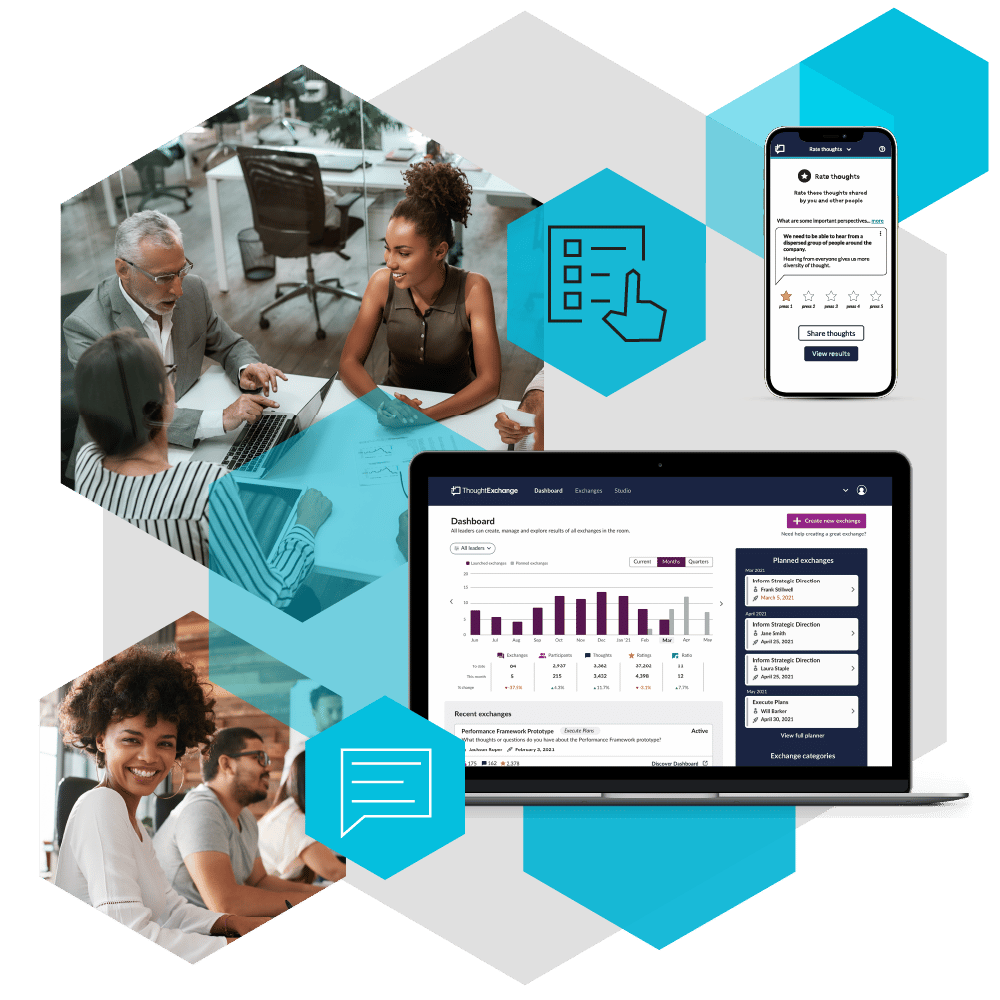Educational Leadership:
A Comprehensive Guide To Becoming a More Effective K-12 Leader
How do you make supported decisions that help your district thrive? Whether creating more inclusive districts, making your educational leadership style work for you, or promoting equity at scale, your community holds the key—tap into their insights to succeed.
Ready to help your district reach its full potential? Check out our guide to leadership in education:
Table of Contents
What is educational leadership?
Educational leadership greatly impacts a school’s climate, attitude, and reputation. Educational leaders manage all aspects of the organization, ensuring schools run smoothly, and motivating their communities to contribute to student success.
In this pivotal time in history, educational leaders need to take a new approach and broader understanding of how social, economic, and technological changes affect the learning environment.
As a learning community’s foundation, exemplary leadership can create a place where students are educated, challenged, nurtured, and encouraged. This leader understands that they are preparing students for their future, and they embrace innovation and community involvement.
On the other hand, inadequate leadership can undermine an educational system’s goals. Students can suffer, and learning can be impacted when schools lack a strong foundation and direction. Disconnected communities and a lack of trust between leadership and the families they serve can set a district back decades.
Understanding the crucial role of an educational leader—and championing the life-long learning that exemplary educational leadership requires—leaves a rich legacy for the community.
“That’s what I really love about using ThoughtExchange in creative and innovative ways to have meaningful change and impact well beyond the day-to-day operations. To really think more from a visionary standpoint. What can we do to transform how we’re currently doing things?”
- Dr. Rui Dionisio, Superintendent, Ramapo Indian HillsWhy inclusive leadership is critical for district success
Are you an inclusive educational leader? If you’re continually striving to ensure your students have access to and are able to participate in the community in a positive manner, you’re on the right track.
Being an inclusive leader takes work, but it can profoundly impact your community and is paramount to your district’s success. Inclusive educational leadership helps leaders achieve their goals–from getting bonds and levies approved to finding common ground on divisive issues.
But, most importantly, inclusive school districts support students to reach their full potential.
It makes sense that inclusive districts start with inclusive leadership. But how do you lead with inclusivity in mind? Engaging your community in the decision-making process is key.
Successful leaders prioritize community building, make the most of data and resources, and create collaborative, inclusive learning environments.
How to make your educational leadership style work for you
Educational leadership is essential for a positive school culture and profoundly impacts student learning and achievement. Effective school leadership improves equity, boosts educator morale, and creates better student experiences, a stronger culture, innovation, and community participation in school decisions.
Using effective leadership practices provides an appropriate learning environment for students. From instructional to democratic to transformative, leadership styles vary, and leaders can apply different leadership methods based on needs.
So what are the most effective educational leadership styles? Those that consult and build trust with their communities, including them in the decision-making process. They include:
- Instructional leadership
- Coaching leadership
- Democratic leadership
- Constructivist leadership
- Transformational leadership
Why leadership for educational equity matters
Creating more equitable school districts is more critical than ever. And despite increased student diversity, there’s still very little diversity at the leadership level.
This disparity affects districts at all levels. For educational leaders, equity is fundamental—it’s your duty to break down barriers to education, promote equity at scale in your district, and be prepared to serve a diverse student population.
Although challenging, there are strategies to help ensure equitable districts and classrooms. Such as reflecting on your beliefs, establishing an inclusive environment from the start, creating a community of trust, and using student voice for curriculum planning. And more!
Be a transformational leader in education
Of the many educational leadership styles, transformational leadership strikes a chord. But what does transformational leadership mean for your district? Leaders who utilize this style lead by example— influencing, inspiring, and encouraging employees to deliver positive change.
A transformational leader works with teams to identify needed change and create a vision to guide it. Often, they start at the executive level by setting an example and striving for a strong sense of organizational culture, employee ownership, and autonomy in the workplace—motivating individuals without micromanaging.
Transformational leaders in education often inspire and nurture future transformational leaders of industry, government, and all aspects of society.
Turn insights into action
“My job has two sides to it—I'm leading a community, but I'm also serving a community. In order to serve, I need to know what they value, and what direction they would like our schools to go in. I feel like I can hit the mark of reflecting our community’s values much more accurately using ThoughtExchange.”
-Dr. Marie Wiles, Superintendent, Guilderland CSD









